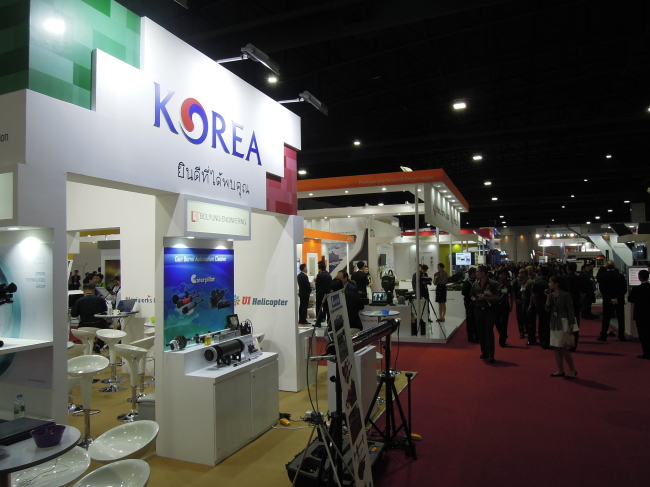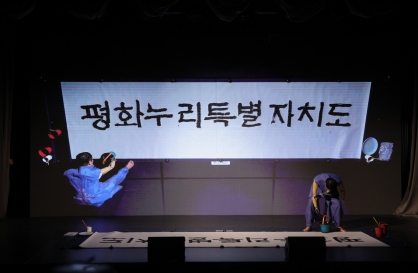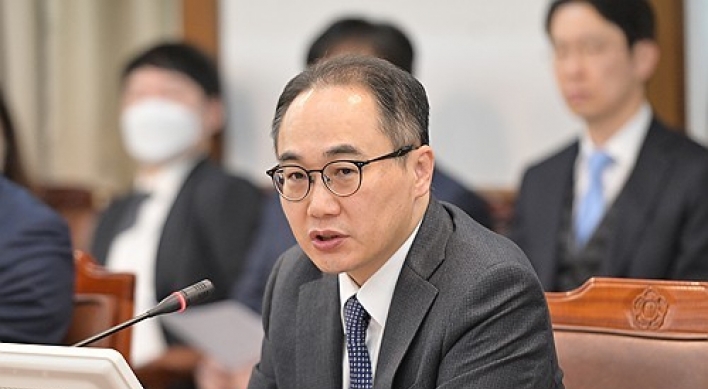
BANGKOK ― Korea, China and Japan are engaged in a heated competition for more arms exports at a defense tradeshow in Thailand as they strive to shore up their presence in the region’s growing markets traditionally dominated by Western powerhouses.
At this year’s Defense & Security 2015, which opened in Bangkok on Monday for a four-day run, the three Northeast Asian neighbors are showcasing their technological prowess in parallel for the first time.
Tokyo, in particular, marked its first-ever participation in an international defense fair with a national pavilion, expedited by a recent overturn of its strictly defensive postwar security law, which will let its military fight overseas and facilitate sales of weapons beyond the border.
At this year’s Defense & Security 2015, which opened in Bangkok on Monday for a four-day run, the three Northeast Asian neighbors are showcasing their technological prowess in parallel for the first time.
Tokyo, in particular, marked its first-ever participation in an international defense fair with a national pavilion, expedited by a recent overturn of its strictly defensive postwar security law, which will let its military fight overseas and facilitate sales of weapons beyond the border.

Mitsubishi Heavy Industries, Kawasaki Heavy Industries, NEC and six other businesses were running booths under the Japanese flag, though most of the products on display were software or protective gears such as flak
jackets and parachutes, rather than large-scale weapons.
After easing its near-50-year ban on arms exports in April 2014, the Shinzo Abe administration officially set up a defense procurement agency last month. An annual state report on defense equipment and technology transfer noted that Tokyo secured 1,731 cases of exports last year alone under the so-called three principles.
“Though some companies did take part in international tradeshows in the past, we would like to focus on building the ‘Japan brand’ as we’re running a national pavilion for the first time here,” said an official in charge of overseas exhibitions at Crisis Intelligence, a Tokyo-based firm that organized the pavilion.
“Next October in Japan, there will be its first-ever aerospace and defense fair, as well as two other exhibitions on antiterrorism and on risk management and security will take place separately.”
The biennial D&S has become one of the biggest exhibitions in the region since its 2003 launch, bringing together a record 400 weapons-makers from about 50 countries this year.
Its growth is in line with the expanding industry at home with its defense budget topping $6 billion last year, a more than 7 percent on-year increase.
At the Korean pavilion, nine large makers of ships, aircraft and other arms as well as 13 small and mid-sized contractors are boasting their technologies, including Daewoo Shipbuilding & Marine Engineering, Korea Aerospace Industries, Poongsan, S&T Motiv and Hanwha.
Next to the section are the large exhibition stands run by two state-run Chinese defense corporations ― the China North Industries Corp., which supplies tanks, trucks and other equipment to ground forces, and China Electronics Technology Group Corp, a surveillance solution provider. Three private contractors also set up booths on the other side of the hall.
A company official said Norinco organized the pavilion and currently exports tanks and armored vehicles to Thailand.
Korean firms, for their part, are upping the ante to build their presences in the Thai and broader Southeast Asian markets, where the U.S., Sweden, the U.K. and other leading military giants have long held sway. A major catalyst was the export of four trainer jets last September by KAI and a 209-ton class frigate in 2013 by DSME.
Yet DSME, which displayed the mockups of the frigate and a 1,300-ton submarine sold to Indonesia, is pinning high hopes for additional exports of the vessel especially after Thailand picked China as a preferred bidder for its submarine project last June.
In the aircraft tender, however, KAI beat its Chinese rival whose L-15 trainer jet had been seen as one of the most likely winners. The Sacheon, South Gyeongsang Province-headquartered company is exploring chances to export more T-50s and possibly FA-50 fighters, the trainer jet’s armed version, and Surion helicopters.
“Thailand is a strategically vital market, being U.S.-friendly yet maintaining close ties with China,” said an official at a participating Korean company, requesting anonymity due to the sensitivity of the matter.
“With sophisticated diplomatic strategies, it will likely carry out a similar approach in the defense industry so we will also need thorough, well-targeted plans.”
By Shin Hyon-hee, Korea Herald correspondent (heeshin@heraldcorp.com)






![[Graphic News] Number of coffee franchises in S. Korea rises 13%](http://res.heraldm.com/phpwas/restmb_idxmake.php?idx=644&simg=/content/image/2024/05/02/20240502050817_0.gif&u=)




![[Robert J. Fouser] AI changes rationale for learning languages](http://res.heraldm.com/phpwas/restmb_idxmake.php?idx=644&simg=/content/image/2024/05/02/20240502050811_0.jpg&u=)





![[Eye Interview] 'If you live to 100, you might as well be happy,' says 88-year-old bestselling essayist](http://res.heraldm.com/phpwas/restmb_idxmake.php?idx=652&simg=/content/image/2024/05/03/20240503050674_0.jpg&u=)
